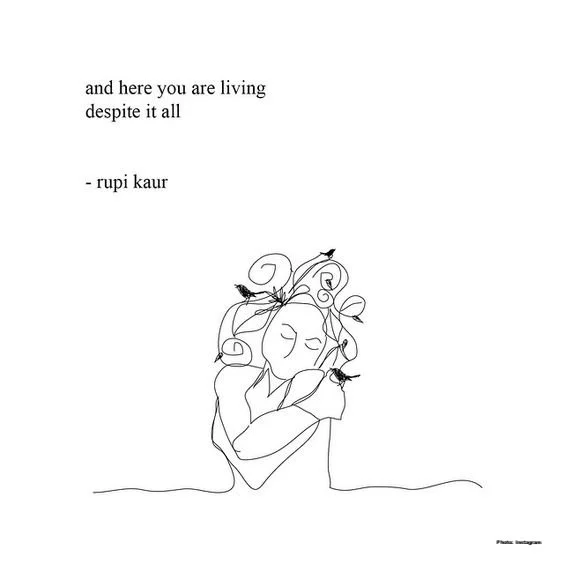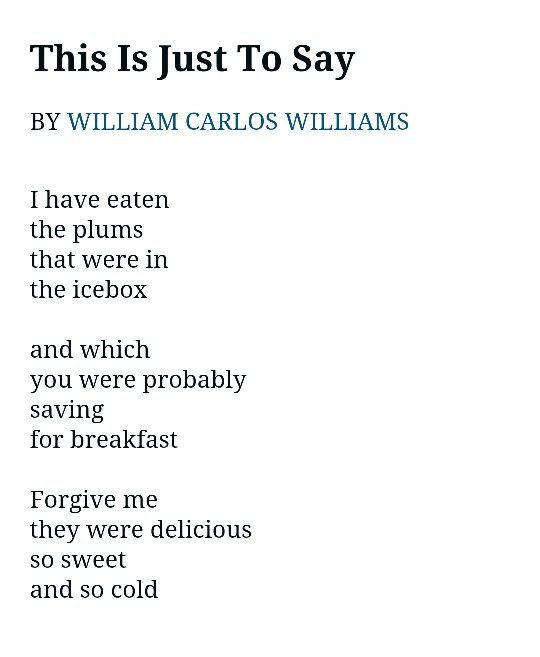On Hating Rupi Kaur
From the desk of our poetry editor, Johnathan Riley.
Ceci n’est pas un duck
This is how we start our Intro to Poetry course: I cancel class and schedule individual conferences with the students. We talk about life, and passions, and how they would describe themselves if they couldn’t mention their family or where they’re from. Eventually, there’s a little lull in conversation that pushes us towards a new question, “What poetry have you read?”. Many students look away and mumble something about Dr. Suess or Shel Silverstein, some laugh, but most of these twenty-somethins’ say that they’ve at least read Rupi Kaur.
Rupi Kaur (last name pronounced kor), if you don’t know, is a Canadian poet of Indian descent whose poems are famous for their short enjambment, simple illustrations, and direct approach in dealing with their subject. According to The New York Times, Rupi Kaur’s debut collection of poetry, Milk and Honey, since its release in 2014, has sold over 2.5 million copies worldwide and has been translated into 77 different languages. This makes it one of the most read collections of poetry of the last ten years.
It’s not surprising then that my students have heard of what, The New Republic calls, “The Writer of The Decade”. Really, it would be incredible if any poet hadn’t heard. But that seems to be the problem: poets have heard of Rupi Kaur and are upset to be put under the same umbrella.
Here’s a link to Rupi Kaur reading some of her work via Twitter and, frankly, I can understand why some people think it’s satire or work that shouldn’t be taken seriously: her performances and writing fall somewhere between lofty professorial readings and the heartfelt spoken pieces of Button Poetry: there’s Louise Glück reading her famous poem, The Wild Iris , in all its bleak, dry, authority, and then there’s Neil Hilborn performing his emotionally driven elocutionary piece, OCD. Between these ends of the spectrum lives Rupi Kaur’s work. Work that is so simple in its approach that most readers can’t imagine that her pieces took longer to write than it takes for someone to exhale on their computer’s keyboard.
Professors, who have been studying poetry longer than I have been alive, take insult to Rupi Kaur being given the title of “poet” and grimace further when students cite her work as the only “poetry” that they know. I get it! Whenever I look at a Jackon Pollack painting I make sure to say to those around me “I can do that”. But, around the Mona Lisa, I’m much quieter. And, while I largely agree with this sentiment expressed by professors of poetry and literature, it’s time we take heed of the poetry (or “poetry”) that people are reading.
I’m sure that half of Kaur’s fame comes from the internet’s cruel and inventive echo chamber, poking fun at the author’s delivery and approach. The other half of her fame, however, may come from a more unsettling truth, one that the poetry community still isn’t ready for.
During these conferences with my students, I ask them what they’re worried about with starting the poetry course. Mostly, I get answers that are based around the fear of poetry itself. That poetry is a puzzle to figure out and they are worried that they are not smart enough to “get it”— how wild! Poetry has built up its gates to the point where its enjoyment is niche and those standing on the outside are afraid to enter, and I ask our readers, when did poetry develop such towering walls? People are more scared of William Blake than they are Mozart. No one is standing around a classroom listening to Mozart asking their students if they “get it”. Poetry has become something that people believe they need “to get” in order “to enjoy”. And, while I wish this weren’t true, it’s part of the reason why the people love Rupi Kaur’s work: it’s completely accessible.
This is a truth that the poetry community largely hasn’t accepted, but its resonance is found all over the internet. Take a closer look at Neil Hilborn’s OCD piece, the popular spoken word performance I linked above. At the time this article was written, it had almost sixteen million views on YouTube. Now, look at the link to Louise Glück reading her most famous poem, The Wild Iris— only five-thousand views. Let’s not forget, Glück won The Pulitzer Prize (one of the nation’s most prestigious literary awards) for that collection of work! But only some people care—those people are not the public. The public wants to digest easily, and who can blame them? Life is hard and reading difficult poetry such as John Ashbery’s piece Self-Portrait in a Convex Mirror, a thirty page piece of ekphrasis, is only soothing to some.
Therefore, I teach Rupi Kaur’s Milk and Honey during my Intro to Poetry course: it’s an entry into the world of poetry. Without fail, it is one of our most engaging classes. Often, when we read other poets, my students are disheartened when they come into class because they didn’t “get” the poems we read that week on their own. Whether it was Louise Glück or John Ashbery, they often feel outside of the material and then they’re outside of the discussions. Of course, by the end of the class, I’ve offered some sort of pathway into the reading material, because that’s what teachers do, but students are excited to share the ideas they’ve discovered on their own: it helps them feel a part of something and like they’ve really contributed. Making students feel that they bring something to the table should be a priority for teachers. And Rupi Kaur’s work, while simple in its delivery, is heartfelt and strong and about things, in some cases, unfortunately, that my students can relate to and access.
This accessibility in Kaur’s work comes from its strong emotional core. This is what we like to call the heart of a piece in my class, or even the thing. Kaur’s work never leaves you wondering what it was about and that’s something to be valued in poetry, and art, too (read Self-Portrait in a Convex Mirror and tell me what it’s about, I dare you). Despite the poetry world’s grumblings, this directness of the heart or the thing, is not new to the scene. Look at William Carlos Williams, the leader (along with Pound) of the imagist movement—his piece This is Just to Say is a great example of a piece of work that is speaking directly to the thing/the heart. However, people still made fun of Williams for this poem, as they have with Rupi Kaur and hers.
Kenneth Koch, another famous poet from Williams’ era, wrote what he called Variations on a Theme by William Carlos Williams where he made fun of Williams for his simple approach. I think Koch had a good time making those imitations—if you look at the rest of Koch’s work, you’d see that he is a man who enjoyed a good laugh. The internet has made droves of imitations of Kaur’s work—and they’re not all bad, but some of them are mean. They’ve made me laugh, at times, but at the end of the day, it made me take a step back, take a deep breath, and remember not to take poetry so seriously all the time.
Poets and the literary community have spent so much time dismissing Kaur’s work for her approach and delivery that they’ve neglected the subject of her pieces. Kaur talks about what it’s like to be a woman, sexual assault, masturbation, body positivity, and the heartbreak we all feel as humans. Her first piece in Milk and Honey is about a boy in grade school holding her down on the playground. She talks about men feeling like they have “a right” to her body. She talks about her healing those wounds and creating healthy boundaries in relationships.
My class is made up almost entirely of young women, a few young men are scattered in there as well. Not only is this work by Kaur an important access point into the world of poetry, but it’s also important modern feminist literature that both young men and women should be reading or should have read. It’s not the end-all, but it’s a start into conversations that are not held enough, conversations about the personal being political, writing about the difficult things, what causes are you championing, and so on. Kaur is a modern voice that the students listen to, so why not invite her into the class?
It's about beginnings. And for my class, Rupi Kaur is the place where we start. I don’t recommend that students write pieces like Kaur, but I do ask that they look at the heart of what Kaur is saying and how she says it. Rupi Kaur’s work has been a long time coming for poetry and its traditional cryptic structures, and her directness, if used tactfully, can produce poems with emotional clarity and complexity: I’d rather ask directions from Rupi Kaur than John Ashbery if I were lost around town.
To end, a note to the literary community: if it looks like a duck and quacks like a duck then history tells us that it is probably a duck. When it comes to poetry, however, it’s not as simple—it if looks like a poem and sounds like a poem, some people in the audience still grumble and shout, “Hey! You! That isn’t a poem”, but you must ignore them: poems aren’t ducks. If someone writes something and says that it’s a poem, then, who are you to say that it isn’t? You may be your own judge of what you think good poetry is, but, when it comes to others’ work, let’s keep it to ourselves, alright? If you’re interested in gatekeeping then maybe you should work in an admissions office, or as a tollbooth attendant, but for the sake of poetry and “genres” at large, let’s keep this mentality out of our writing and away from our students.


